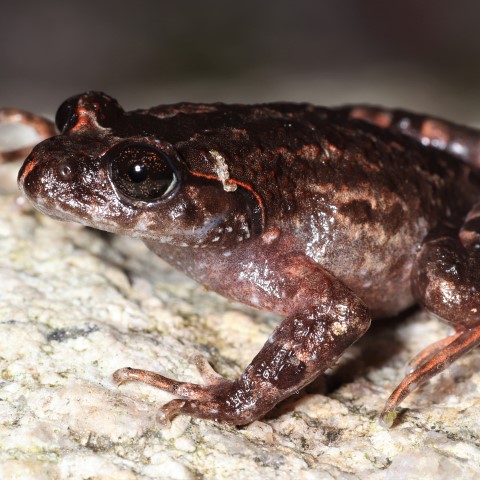Conservation Actions
Research Needed
The first step towards ensuring this species' long-term persistence is to address the lack of data through research, to determine its true distribution, population size and trends, ecology and threats. The limestone cave system where this species occurs is within the coverage of Thailand's protected area network, intersecting with Sai Yok, Thong Pha Phum and Khlong Lamgu National Parks (UNEP-WCMC and IUCN 2020). Further fieldwork in nearby karst regions in Thailand, and adjacent parts of the Tenasserim Mountains in Tanintharyi, Myanmar, was strongly recommended to determine the existence of other populations of this species, or lack thereof, which may have significant implications for its conservation status (Suwannapoom et al. 2018). If the species is found to be truly restricted to its currently known locality, it is likely highly threatened and options for the protection of its habitat should be explored.
Location Information
This species is only known from a limestone cave in the karst region of Sai Yok District in Kanchanaburi Province, western Thailand, at 440 m asl (Suwannapoom et al. 2018). It may occur more widely, but numerous surveys in the surrounding forests and nearby karst massifs have not yielded additional populations of the species to date, so the species may possibly be endemic to its only known locality (Suwannapoom et al. 2018). However, similar limestone karst formations exist in other parts of the Tenasserim Mountains, which extend to the border regions of the adjacent Thai provinces of Tak, Uthaithani and Suphanburi, as well as adjacent Tanintharyi Division in Myanmar. It is possible that further surveys could uncover this species' presence in some of these areas and they have been included as potential range in the range map associated with this assessment. The map included with this assessment does not show the one known location of the species as it may jeopardize its conservation. The extent of occurrence (EOO) is estimated to be less than 100 km2, as the species is currently known only from one limestone cave, however a more accurate estimate is not currently possible due to exact location being undisclosed.
Geographic Range
Extant
Thailand



